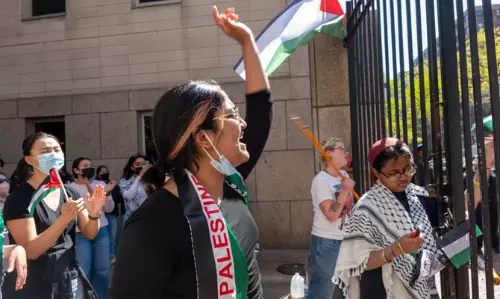
Odisha's BJD, Bihar's JDU come forward demanding caste based census
text_fieldsBhubaneswar: As the Rajya Sabha on Wednesday passed the Constitution (One hundredth and twenty-seventh amendment) Bill 2021 to restore the power of State Governments to identify and specify Socially and Economically Backward Classes(SEBCs), Biju Janata Dal (BJD) MPs has demanded to conduct caste-based Census for identifying and enumerating the SEBC/OBCs.
A delegation of BJD MPs from both the Houses of Parliament on Wednesday met Union Home Minister Amit Shah at his Parliament chamber and submitted a memorandum in this regard.
The MPs in their memorandum said due to non-availability of reliable and authentic data about the exact numbers of the SEBC and OBC it has become an impediment for taking up focused planning for the welfare of these communities.
"It is high time that the Central government frames a legislation in this regard for benefits, welfare and all round upliftment of the SEBC/OBC categories of population after collection of scientific database through General Census 2021 for establishment of compelling reasons, like, backwardness, inadequate representation and overall administrative efficiency," they said.
The MPs requested Shah to consider the proposal for insertion of appropriate columns in the Census format 2021 to get a clear picture regarding socio-economic and educational status of SEBC, OBC and other castes for formulation of appropriate policy for their benefits.
They have also demanded to enact a central legislation for increasing the reservation beyond the 50 per cent ceiling for empowerment of States.
In January 2020, the Odisha Cabinet had resolved for conducting socio-economic caste enumeration and the State had requested the Cabinet Secretary for conducting census for SEBC and OBC category in General Census 2021.
However, the Registrar General and Census Commissioner India had rejected the proposal. Following this, the Odisha Assembly had passed a resolution unanimously in this issue and the State has formed a Commission to conduct a survey to understand the socio-economic condition of people belonging to this category and take steps for their welfare.
On Monday, Bihar chief minister Nitish Kumar had reiterated his demand for caste-based census, saying it would be in the best interest of the country and it was for the Centre to take a call on the matter. The Bihar Assembly had unanimously passed a resolution on conducting Caste Census in 2019 and again in 2020.
"This will benefit all. There should be caste-based census at least once to get a hang of the real status of various castes, which will help in making development plans," he said, after his weekly 'Janata ki durbar mein mukhyamantri' programme to listen to people's problems directly and address them.
The Chief Minister also said he had written to Prime Minister Modi on the matter and his office had received the correspondence on August 4. He said, however, that there had been no response since then.
In February this year also, Kumar had batted for a caste-based census, but now his statements have assumed greater significance, as the Opposition is trying to make it a rallying point to corner the BJP ahead of the crucial UP elections.
In 2017, the Centre had set up the Justice Rohini Commission, which favoured sub-categorisation of reservation for other backward castes (OBCs) in the government sector by splitting 27% quota into different categories of OBC for equitable distribution of benefits among different sub-castes. After several extensions, it could submit its report, dividing 2633 OBC sub-castes in the central list into four sub-categories with 2%, 6%, 9% and 10% quota to add up to 27%.
Before that, in 2011, socio-economic and caste census was done in 2011, though caste data could never be made public due to several discrepancies. Till date, Census only makes the count of population based on religion and SC/ST population.
























